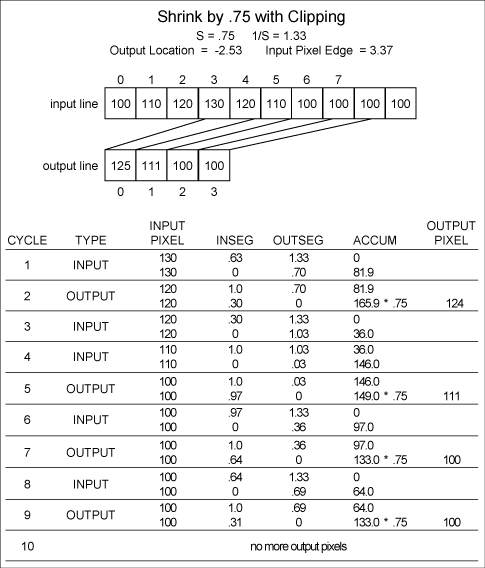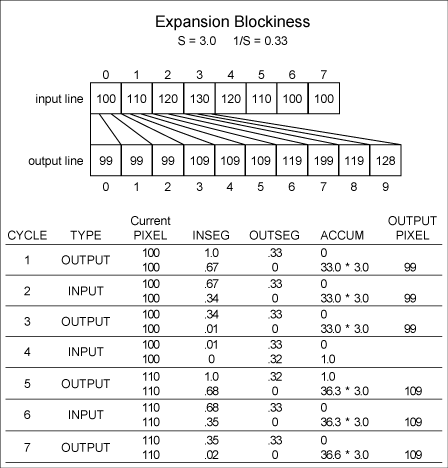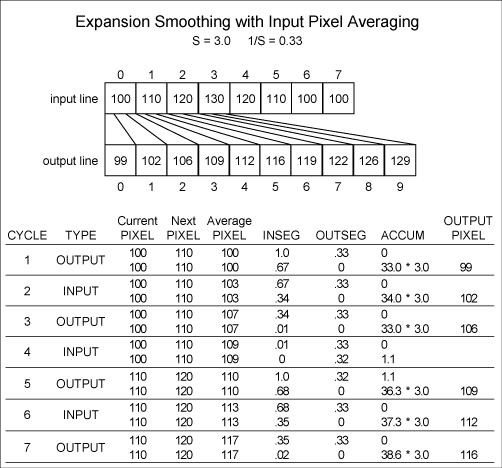Output
Clipping
Clipping
is the process of ignoring output pixels that
don't fall within the output line. These pixels
can be ignored prior to being calculated.
By
projecting the left edge of the output line into
the input pixel line, it can be determined where
in the input pixel line the first output pixel
should begin. This point is unlikely to be on
an input pixel boundary, which means that interpolation
should begin with a partial input pixel. This
can be simply accommodated by initializing the
first value of INSEG to a value less than 1.0.
In this manner all beginning border pixels in
the output line can be properly mapped.
FIGURE
7. Example of clipping.

Figure
7 illustrates clipping where the output line
is to begin at -2.53 with a size factor of 0.75.
If the beginning of the first input pixel maps
to -2.53 in the output line, then we have to move
2.53 output pixels' worth of input pixels into
the input line. This input offset (INOFF) is:
INOFF = 2.53 * 1.33 =
3.37
To
begin at input pixel location 3.37, just set the
input pixel to 3 and INSEG to:
INSEG = 1.0-0.37 = 0.63
End-of-line
clipping is automatically accommodated by simply
terminating when the last whole output pixel is
generated. The last output pixel at the end of
the line will automatically be a properly mapped
output pixel.
Expansion
Smoothing
Expansion
with the algorithm as described results in a blocky
output image. As illustrated in Figure
8, several output pixels of identical value
are generated from a single pixel. These areas
of identical value lend a blockiness to the output
line. This can be accommodated with a simple expedient.
Instead of inputting raw pixel values to the interpolation
algorithm, we can take pixel values from a one-pixel-wide
averaging window traversing the raw input pixels
based on the value of INSEG. INSEG can be viewed
as a pointer to the spatial position of utilization
of input pixels. The averaging window can be viewed
as delivering one pixel's worth of input value
beginning at INSEG.
Figure
8. Example of expansion blockiness.

This
relationship is:
input pixel = INSEG *
current pixel + (1.0- INSEG) * next pixel
The
operation of the averaging window and its effect
on the output is illustrated in Figure
9.
During
shrinking the averaging window is ineffective
because INSEG is 1.0 most of the time, effectively
disabling the averaging. Therefore the window
can be operated continuously for all transforms,
whether they are expanding or shrinking.
Figure
9. Example of expansion with averaging window.

|